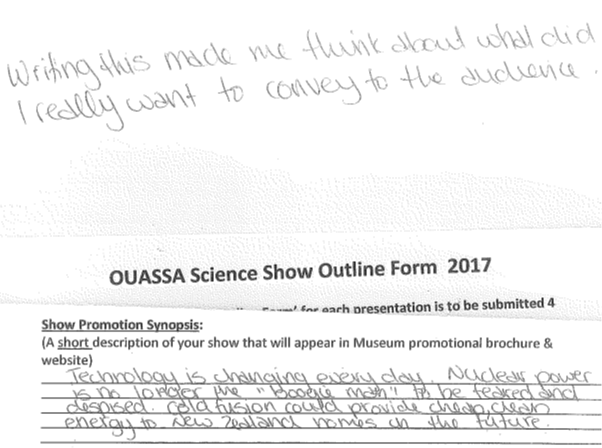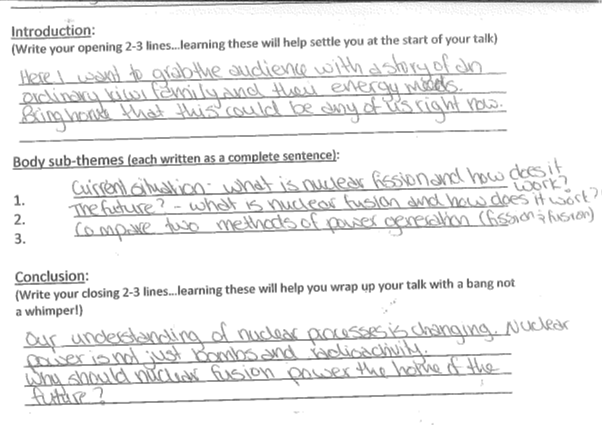 For this week’s blog, I thought I would look at an area that many OUASSA 2017 teams seem to be struggling with, breaking up the work for the team presentation. I have put myself into the roll of the team leader. I wrote up the presentation outline (which I did alone but really the team leader should be doing this with input from their group) and then I thought about how I would break up the work of the presentation to a hypothetical group of 6 team members. I picked 6 because that 7-9 is the group size for our OUASSA 2017 students.It didn’t actually take me very long to think about the outline and write it out. The most important thing to remember at this stage is that it is a work in progress. As we research and craft the presentation, some of the things I have written on my outline may change, and that is ok. It is a guide to myself and my team for where we are generally heading with our presentation. Having a good outline will ensure that my team is on task and not wasting time on research we won’t be using for our presentation. It also helps everyone in my group have a clear idea of what the big picture will look like, and where their piece fits in.
For this week’s blog, I thought I would look at an area that many OUASSA 2017 teams seem to be struggling with, breaking up the work for the team presentation. I have put myself into the roll of the team leader. I wrote up the presentation outline (which I did alone but really the team leader should be doing this with input from their group) and then I thought about how I would break up the work of the presentation to a hypothetical group of 6 team members. I picked 6 because that 7-9 is the group size for our OUASSA 2017 students.It didn’t actually take me very long to think about the outline and write it out. The most important thing to remember at this stage is that it is a work in progress. As we research and craft the presentation, some of the things I have written on my outline may change, and that is ok. It is a guide to myself and my team for where we are generally heading with our presentation. Having a good outline will ensure that my team is on task and not wasting time on research we won’t be using for our presentation. It also helps everyone in my group have a clear idea of what the big picture will look like, and where their piece fits in.
So on to the mechanics of it. I wrote what I was thinking each step so hopefully my handwriting is legible to all 🙂
The final step was filling in the rest of the form. I thought about what I needed people to understand to convey my message. I need people to understand what is fission, fusion and the difference between them. I have a really broad idea of how I want the introduction and conclusion to look but it’s not finished yet. For a first draft, this is totally fine, we’ll come back and tweak this while developing the presentation.
Finally, how will my group divide the labour so that we do the work that needs to be done but don’t waste time on anything else? This is what I came up with:
- 1 person will write a brief introduction to the talk as a story with an ordinary kiwi family. This should only be a minute or so long so emphasis on BRIEF.
- 1 person will research fusion and come up with a brief explanation to report to the team
- 1 person will research fission and come up with a brief explanation to report to the team
- Once that is done, 1 person will do a 1 minute compare and contrast summary
- 1 person will use the research to do our visualisations of each concept
- 1 person will write the conclusion
We will manage everyone’s ideas and contributions in a google doc that we can all contribute to. I know that some of my team are really busy with winter sports in June so they will do the research so that their part is finished early on. Those of us not as busy closer to camp will do the parts that depend on the research.
At camp we will rehearse our visualisations together and tweak our presentation before we show our presentation to the panel for feedback. This shouldn’t take long if everyone has done their part.
I have attached my full outline form: ScienceShowOutline.
Hopefully this will give you guys a bit more guidance on how to distribute the labour and what we expect you to be doing. Remember, we are only an email or phone call away if you need any help.










Recent Comments